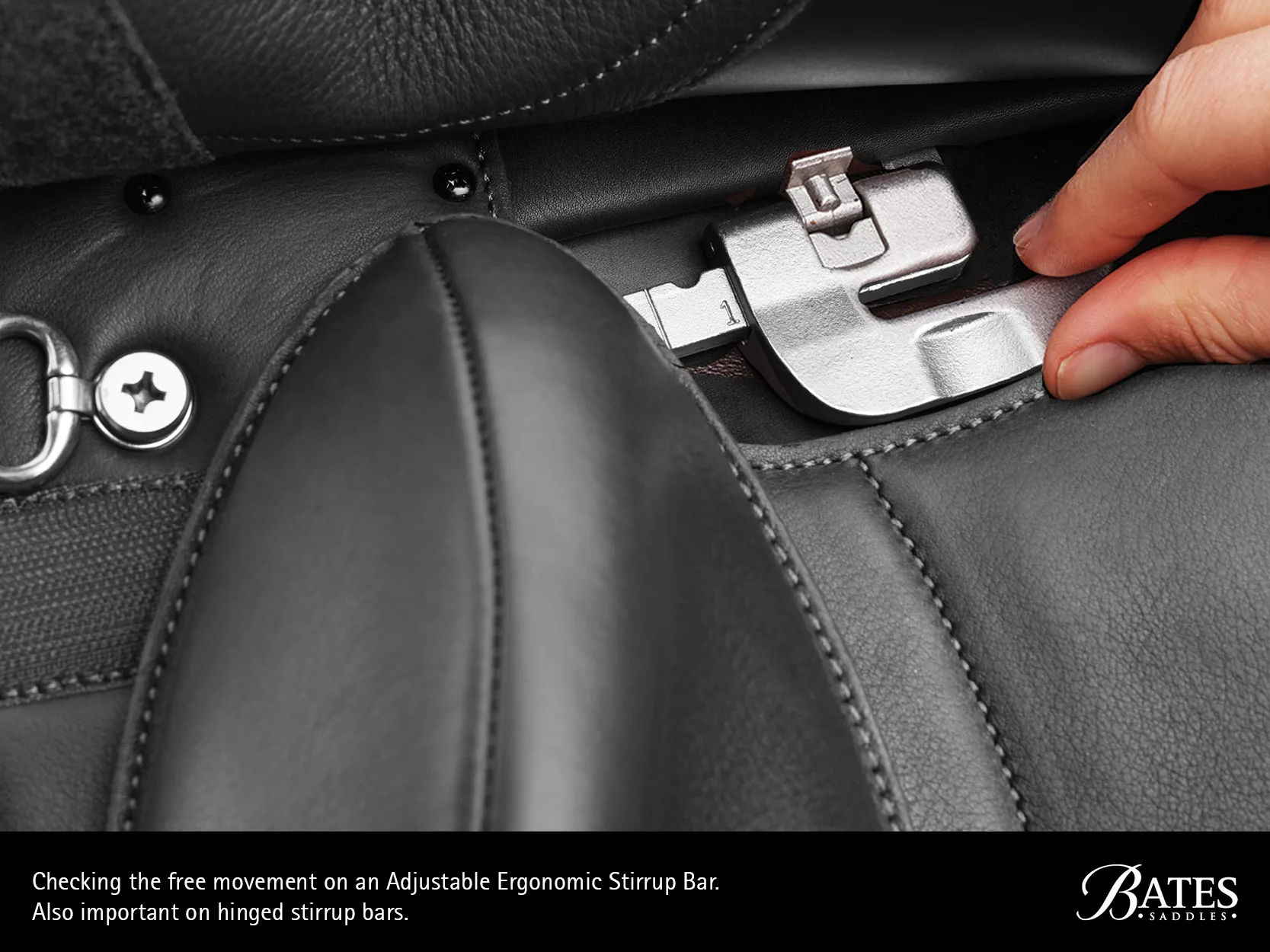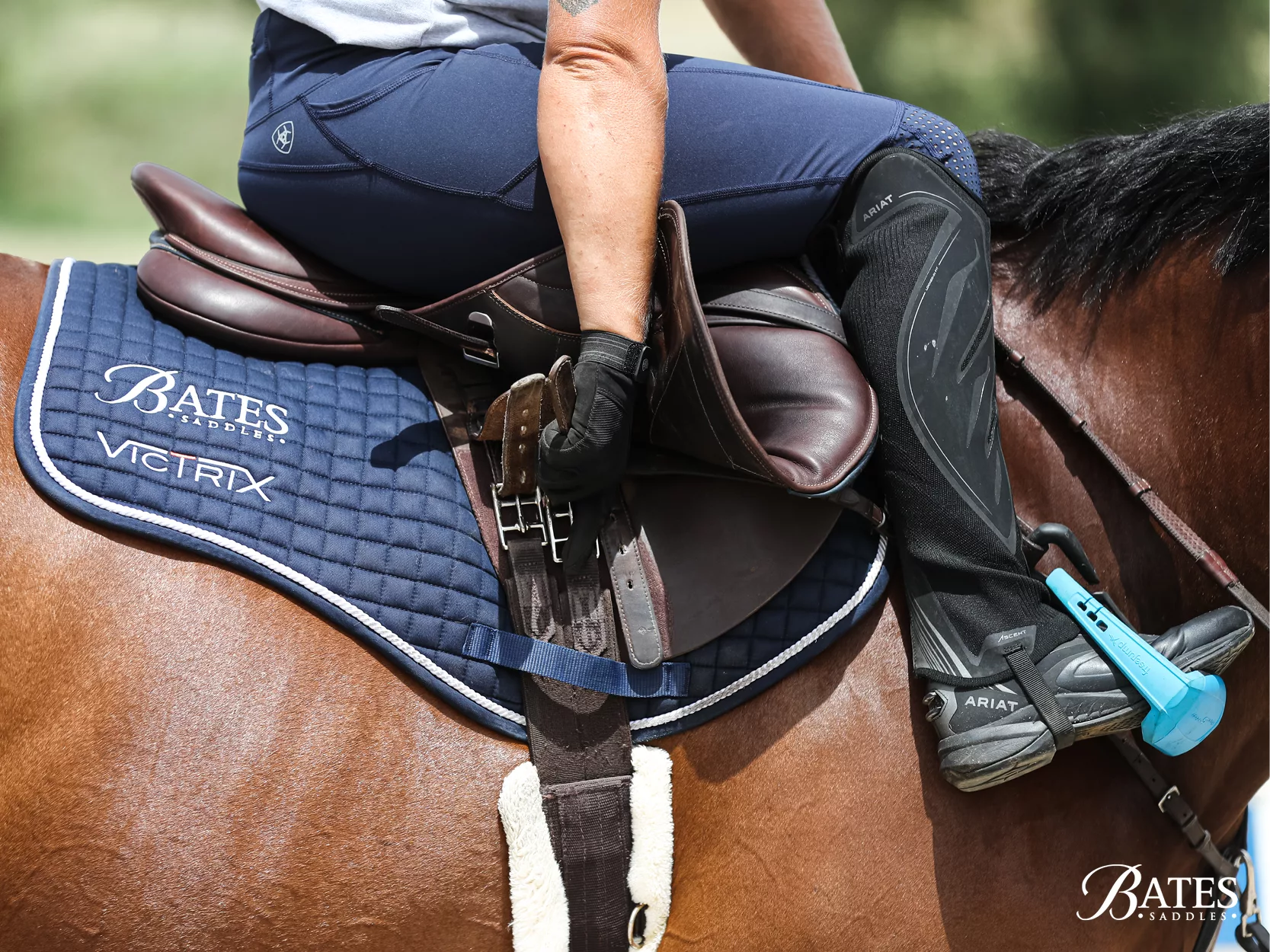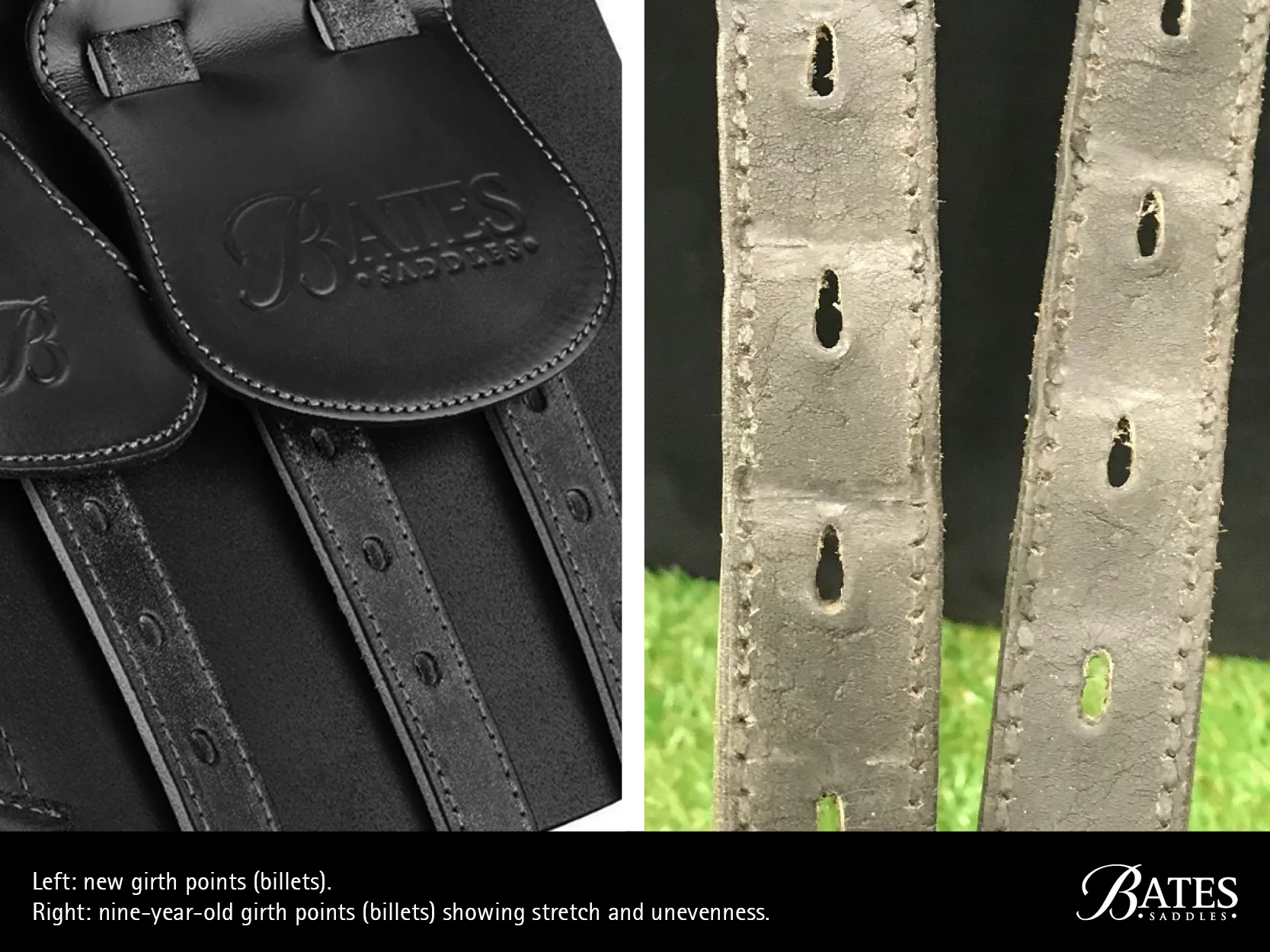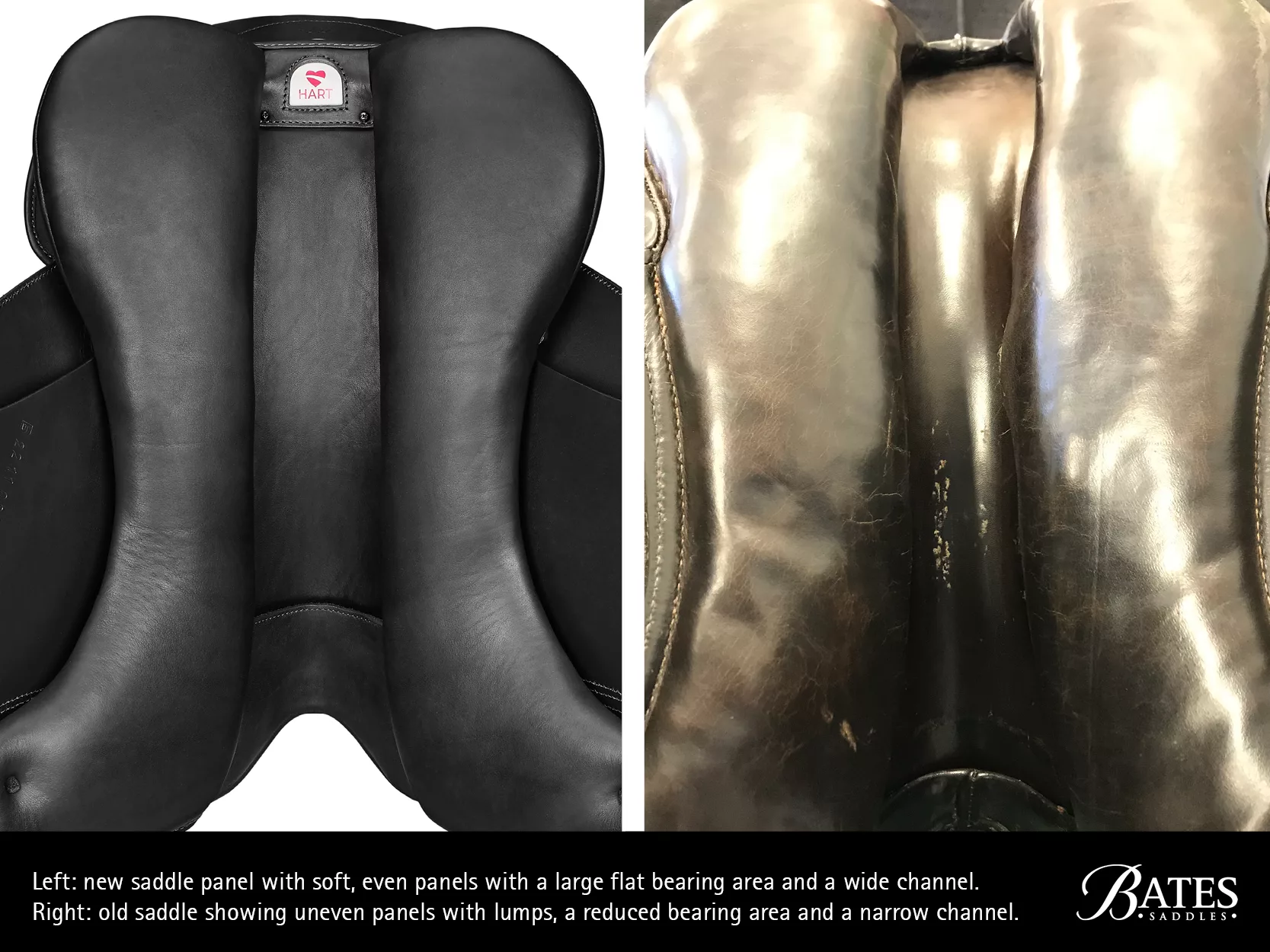Spring Saddle Health Check with Bates Saddles

Warm weather is here, and the show season is underway, which is a perfect time for a yearly saddle and equipment check.
Recently, Bates Saddles held a webinar alongside British Eventing where Emily Bates, head of product innovation at Bates Saddles, went through a saddle health check. Here are some of her top tips!

Stirrup Leathers
Stirrup leathers are important to keep an eye on as they can stretch and wear faster than you might think depending on the quality and material. Take the leathers off of your saddle and make sure to check the hardware—that the tongue of the buckle is able to lay flat on the buckle and that everything is moving nicely.
Check that the stitching is attached securely, then check to see if the leathers have stretched evenly on both sides or if one is longer than the other. Rotate your leathers so that over time they’ll stretch evenly. Make sure the leathers are supple and strong, especially at the bend near the stirrup bar and the stirrup iron. If they show any cracking, toss them—never use them to the point of failing. Look for visible signs of wear, then be proactive and toss them.

Girth
Check the hardware and buckles on your girth. Is the elastic degrading or showing signs of curling on the edges? That’s a sign it’s time to replace or repair. Check all of the stitching. “Whether your girth is leather or synthetic, is it still looking clean and soft and moveable and comfortable for the horse to wear?” said Bates. “Are we seeing anything start to break down, dry out, or worst case, start cracking?”

Saddle
First, look at the billets. Those are often the first thing serviced on a saddle. Make sure the stitching is in good condition when attached to the saddle. If they’re longer and narrower, that’s a clear sign that the strength is compromised, and it’s time to replace them.
There should be no movement detected in the stirrup bar. Listen for any clicking or sounds that there might be something amiss
The saddle tree is hugely important because it supports our weight in the saddle, said Bates, adding that, “the front of the saddle around the pommel area has got a very important job to do to keep the saddle free and up and clear away from the horse’s wither and spine. We really don’t want any level of flex through that front area. Give it a good push and a pull and make sure there’s no real movement in that area. Listen for any clicking or sounds that there might be something amiss.”
Check that any screws or components are firm and in good condition. Check the length of the tree through the length of the saddle. The seat should not flex or bow in the center.

The saddle panels that lay on the horse’s back can become misshapen over time due to storage and just everyday use. “We rarely stop and take the time to look at the panels of our saddles because often they’re sat on a rack or we’re carrying them with saddle clothes underneath them,” said Bates. “Keeping your panels in good condition and well-maintained can make a huge difference to [a horse’s] happiness under saddle and their way of going.”
Look for symmetry. Make sure the channel down the center is wide with no narrowing. Panels can be made from wool or synthetic flocking, air cushion or foam, and it’s important to have the panels refreshed every year. Foam panels in particular can compress over time.

Leather Cleaning Tips
The surface grain of leather is made up of fibers that are tightly knitted together. Keeping your leather supple is key to its longevity. Leather loses part of its moisture through sun exposure and UV rays, sweat, moisture, and dryness in the environment. If you keep your tack or ride in a hot environment, be sure to replenish well and watch for mold growth in humid environments.
Glycerin saddle soap is a good choice to start with and comes in various forms like spray, wipes, and bar soap. Use a soft sponge or cloth with warm water. The soap will lift dirt to the surface and remove it, preparing it for moisturizing.
Use a light moisturizer or use a heavier product like a wax-based balsam as a second step. “We tend to not recommend oil dressings anymore because tanning of leather has come a long way in recent years,” said Bates. “Leather tends to already be very supple. It doesn’t require the same level of breaking in that it used to need. In particular, if we’re expecting our leather to be load-bearing and take weight, we don’t want to over-lubricate the leather fibers because then we’re going to increase the ability for the leather to stretch. With a product that’s more wax-based, you don’t really have the same danger of that happening. The leather will absorb what fats it can, and you’d be less likely to overdo it with a balsam.”
If your leather is really dry, allow the product to sit overnight. The leather will absorb what it needs, then you can wipe off the excess in the morning.
If there’s a difference in color, scratches, or wearing, use more product regularly to recreate the grain and move the fibers back together.
While these tips are a good start to keeping your saddle well-maintained, a yearly saddle check with a qualified saddle fitter is key to keeping you and your horse happy.














